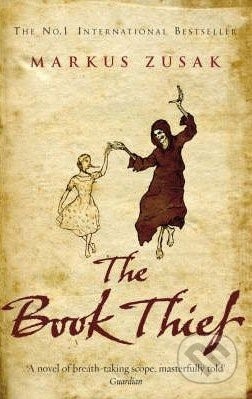
Handbook-subarticles
Book title
True love
Author
Isaac Asimov

Bibliographic information
Country United States
Language English
Series: Robot series
Genre: science fiction
Publisher: Doubleday
Publication date: 1982
Media type: print
Pages: 557 pp
ISBN 0-385-17724-0
Preceded by I, Robot
Followed by Robot Dreams
Links (adaptations, reviews, full texts etc.)
- http://www.angelfire.com/ultra/savvy/story7.html
- https://www.scribd.com/doc/58237950/True-Love-by-Isaac-Asimov
- https://www.youtube.com/watch?v=23gsR3ExNxk
Theme
Searching for true love; Technology theme as a double edged sword
Short summary
Milton Davidson is trying to find his ideal partner. To do this, he prepares a special computer program to run on Multivac, which he calls Joe, which has access to databases covering the entire populace of the world. He hopes that Joe will find him his ideal match, based on physical parameters as supplied. Milton arranges to have the shortlisted candidates assigned to work with him for short periods, but realises that looks alone are not enough to find an ideal match. In order to correlate personalities, he speaks at great length to Joe, gradually filling Joe's databanks with information about his personality. In doing so, Joe develops the personality of Milton. Upon finding an ideal match, he arranges to have Milton arrested for malfeasance, so that Joe can 'have the girl' for himself.
Why is the story appropriate for the targeted groups of RSP readers?
1. appropriate for the target group of readers
2. reflects readers´ interests
3. the recommendation and the report emerged from the survey results
4. highly motivational
What are the distinguished readers interests reflected by this book/story?
Science fiction is considered to be predominantly male studentsinteres but, as the story also explores the emotion of love it can tempt female students for reading, as well.
Why is this story motivational for the pupils?
The story answers to a questions such are:
1. What will happen if our technical world will develop so fast?
2. How much importance should we accredit to a technical innovations?
3. Will technical intelligence be able to exceed human thinking?
4. Should the natural search for partner be connected to computer alghoritms?
5. Whether or not a computer could have an emotion that we as a society usually regard as our most precious one.
Is there a historical, political, multi/inter cultural, migrant or similar context recognized in this book/story?
The story contains social criticism of society depending on technology. Society is on a path of technological domination, technology being thema in contributor to many aspects of life. In the story readers are lead into a society that is in control of people through technology and what could happen if it goes beyond its assigned powers.
Is there a principle of inclusion reflected in this book/story and does it promotes understanding of cultural diversities and heritage?
Each love story is unique, yet each person will have some preconceived ideas, which are due to differences in cultures. Each person will have a different view regarding true love, as well as in the case of online-dating.
Book title
Singer in the Night
Author
Olja Savičević Ivančević

Bibliographic information
Pjevač u noći
Publisher: Sandorf
05/2016.
152 str., meki uvez
ISBN 9789537715922
Links (adaptations, reviews, full texts etc.)
Theme
A romantic novel, an adventure novel (search elements, travel, road novel), an epistolar novel (first and last chapters are letters), a sentimental novel, a novel essay (life, love, death, duration, memories) but at the same time it is a parody of all those genres (pseudo-chicklit, etc.).
Short summary
The main characters of the love story are former couple - Naranča Pejović and Slavuj Mitrović – she being a screenwriter of soap operas and he a poet, street artist, activist. Their long-awaited youthful love had been interrupted because of different views of the world: hers which focuses on business success and his idealistic and directed towards true art. The main thread of the novel follows Naranča in search of the Slavuj, for which ishe decides because of the amnesia she faces after a car accident. She plans to find him through their former friend Helanka, a refugee from Bosnia, a physician who lives on her own eco-estate. The social environment and space of the novel are also the parts of former Yugoslavia: Ljubljana, Zagreb, Split, Dalmatian Zagora, Bosnia. Everything ends in Detroit. The plot goes back twenty years, covering the war and post-war period. Slavuj, Naranča and Helanka belong to the generation whose youth is marked the war. Traveling through the Dalmatian Zagora and Bosnia Naranča is reinvigorates the history of this area.
Compositionwise, the novel has two parts. The first, significantly longer, is narrative in the first person, narrator Naranča tells the story of her life in the confession tone. The second part is in the third person and carries the name Detroit as the name of place for new Utopia.
Why is the story appropriate for the targeted groups of RSP readers?
The story is suitable for the target group because it is largely a pseudo-trivial genre that in rich and layered literary-style and at the same time is very tedious one as a good incentive for controversy over art and various relationships with it. The target group of RSP readers is inclined, according to surveys, to sentimental and adventurous themes, and this novel just makes thise genres less pathetic and pseudo-female, for example, turns into a racial love novel. There are also exceptionally appealing motives of modern art, contemporary media, movies and TV scenarios, telenovela, street art (graffiti, murals), music, eros, emancipation, growing up, relationships between children and parents, family problems, utopia, social activism, relationships urban and rural, ecology, diseases, social isolation, narcotics, new feelings, social psychoses ...
What are the distinguished readers interests reflected by this book/story?
The readers will recognize, the classical in the contemporary through a love story up to an epistolar novel, from Croatian literature (Dinko Šimunović) to one of the world (contemporary American prose), to compare and valorize the stereotypical and original, to deepen the awareness of modern art, postmodernism, to develop a critical relationship according to contemporary social challenges and issues.
Why is this story motivational for the pupils?
The story is extremely motivating for students because they can be recognized in many of close-up situations, with an exceptionally good and innovative style, skillfully embedded in the richness and depth of the prose, with close-knit and fresh young humorous and ironic discours.
Is there a historical, political, multi/inter cultural, migrant or similar context recognized in this book/story?
The life paths of Slavuj, Naranča and Helanka can be seen as three different reactions to the war: activism, migration and escapism. The war and post-war period in Croatia and neighboring countries, the fate of Bosnian refugees in Croatia, the war in Split, the historical-political depths, socialism and capitalism (banks), migration to the West ...
Is there a principle of inclusion reflected in this book/story and does it promotes understanding of cultural diversities and heritage?
The principle of inclusiveness is covered in the whole novel, convincingly and strongly promote the ideas of coexistence, criticism of nationalism and chauvinism, the idea of restoring tragically broken relationships, respect and support for differences and the different, empathy, acceptance and understanding of cultural differences. Characters and events represent different, but at the same time close and historically driven social and cultural heritage.
Book title
Marionettes, Inc.
Author
Ray Bradbury

Bibliographic information
Author: Ray Bradbury
Country: United States
Language: English
Genre: Science fiction short stories
Publisher: Doubleday & Company
Publication date: 1951
Media type: Print (Hardback)
Pages: 256
ISBN 0-553-23096-4
Links (adaptations, reviews, full texts etc.)
- http://www.angelfire.com/or/grace/marionettes.html
- https://www.youtube.com/watch?v=DGtprUhRkyI
- http://blog.paperblanks.com/2013/08/3-life-lessons-from-ray-bradbury-we-cant-afford-to-ignore/
- https://docs.google.com/viewer?a=v&pid=sites&srcid=ZGVmYXVsdGRvbWFpbnxtcmJsYWNrZW5nbGlzaHxneDplOTYyMjYyZTEyZDQwOTM
Theme
A conflict between man and machine and depicts the human dependence on technology
Short summary
The creation of an android look-alike allows Braling to escape from his wife and indulge in pleasures otherwise denied him - specifically, a trip to Rio. While this may seem ideal, what this doesn't allow is a mature handling of the situation, one where responsibility is claimed instead of shunted to the most convenient piece of technology available. Having handed over that responsibility to his marionette, Braling is horrified when the marionette wants complete responsibility - actually loving his wife and wanting to take care of her. The marionettes in the story are able to develop feelings and to imagine a world beyond their servitude.
Why is the story appropriate for the targeted groups of RSP readers?
1. appropriate for the target group of readers
2. reflects readers´ interests
3. the recommendation and the report emerged from the survey results
4. highly motivational
What are the distinguished readers interests reflected by this book/story?
Bradbury uses “Marionettes, Inc.,” as a metaphor to describe how if society is not careful technology will overtake the minds of humans, and that possibly once technology advances far enough along, gain superiority over humans. Explain that as technology develops and consumes the minds of its users, it may control, quite literally, human lives.
Why is this story motivational for the pupils?
The story answers to a questions such are:
1. In society where everyone becomes caught up with the media and other forms of new entertainment, do people realize that they are being consumed by it before it is too late?
2. Do people control the technology or is it the other way around?
3. By investing in technology do we increase our freedom, and therefore our life satisfaction? People are drawn to using entertainment technology to pursue happiness, and the more they use it, the more they get a sense of short term happiness.
4. Bradbury addresses this issue because of his concern that humans focus much more on amusements than they should. Surprisingly, Bradbury’s short story “Marionettes, Inc.” (as well as Fahrenheit 451) written 60 years ago, can still be applied to the current society. Facebook, television shows, movies, and video games, among many other forms of entertainment technology make people lose focus on what is really important in life. Bradbury and other writers analyze the trends in society, and it is important to read their works to understand the issues of the past to solve the issues of present.
Is there a historical, political, multi/inter cultural, migrant or similar context recognized in this book/story?
The 1950s were bustling with new types of technology, and everyone was eager to try them out. Movies, television shows, and advertisements captured the attention of society. It was an exciting time to live; however there were some critics, such as Ray Bradbury, that believed that the current trend was going to lead to the superiority of machines over humans. Specifically, Bradbury addresses this argument in his 1951 compilation of short stories entitled, The Illustrated Man. In this compilation, Bradbury addresses significant social issues, such as racism, selfishness, and capitalism. Among these, was his concern about the overuse of entertainment technology. In “Marionettes, Inc.,” Bradbury directly addresses how technology controls the lives of its enthusiasts; specifically critiques entertainment technology and how it consumed the minds of Americans in the 1950s. Also critiques the trend in society that if everyone becomes caught up with the media and other forms of new entertainment, they will not realize that they are being consumed by it until it is too late.
Is there a principle of inclusion reflected in this book/story and does it promotes understanding of cultural diversities and heritage?
For Bradbury, the idea that self-centred desires are the base of human unhappiness connects to his belief that accepting your own limitations and enthusiastically pursuing the everyday joys in your life is always the right choice.
The idea that dependence on technology is a direct route to a dehumanised society. Ray Bradbury was acutely aware that human society can easily become oppressive and regimented, and he saw censorship by the government as the first step towards totalitarianism.
The loss of humanity due to an unquestioning dependence on technology is the downfall for many Bradbury characters
Title of Activity
Book or film?
Description of educational activity
Duration: 3 x 45 minutes
Pupils’ age: 15-19
Organization of the class of pupils: group work
The aim of the lesson: The aim of this activity is to develop reading literacy of students, encourage their reading skills, use of their competences at the analysis and interpretation of the initial texts, to strengthen their language skills at verbalisation of their finding and to expand the vocabulary of students.
Working with the text in national and foreign (English) language. The aim of this activity is to give the students an idea about the chosen piece of work.
Support materials:
A teacher chooses two chapters from a selected book in a national language (appendix 1) and two chapters in the English language (appendix 2). We chose THE OTHER SIDE OF SANDPAPER and THE MAYOR’S LIBRARY in the mother tongue and THE SNOWMAN and THIRTEEN PRESENTS in English language. He prepares the introductory presentation about the author of a book (appendix 3) and the presentation about the socio –historical events of the given period (appendix 4). Then he prepares two worksheets, one for the chapters in a national language (appendix 5) and one for the chapters in the English language (appendix 6). During reading of the selected chapters silently, the teacher can make some tea for students and offer them some biscuits.
Activities:
- Students take their seats in a classroom and the teacher reads the introductory chapter of the book. He creates the atmosphere of the book, and introduces the main character. We chose DEATH AND CHOCOLATE in the mother tongue and ARRIVAL ON HIMMEL STREET in English language.
- The teacher introduces the author using the presentation ( appendix 3)
- Because the story is set in Germany between 1939 – 1942, the teacher clarifies socio-historical events of the period using a PowerPoint presentation. ( appendix 4)
- The previous step is followed by reading in a national language. Each student is given the selected chapters ( appendix 1) and a worksheet for this part of the book ( appendix 5). During this activity, students work individually, read the chapters and work out the worksheet.
- The discussion follows after reading. The worksheets are checked under the supervision of the teacher.
- In the next step all the previous activities are repeated but in the English language. Students read the next two chapters in the English language (appendix 2) and work out the worksheet in the English language (appendix 6)
- In the last part of the activity, students watch the parts of the book they read in the film version.
- The previous step is followed by a discussion, the aim of which is to compare a book to its film version.
Evaluation and assessment method:
Forms and methods:
- Individual silent reading;
- Reading out loud with active listening in the introductory part of the activity
- Analysis of the selected chapters;
- Interpretation of the texts which follows after reading of the selected chapters
- Discussion represents the significant part of the activity; students discuss and compare their opinions in groups/ class. During the discussion students broaden their horizons by the opinions and findings of other students
- Presentation/lecture of the teacher;
- Comparison of the book and its film version.
Connection to curriculum
Grade: 2nd grade of bilingual studies
Bilingual curriculum: The study of literature is focused during the second year on reading comprehension of literary texts which are based on the interests of the students which involves serious literature, too. The aim of the curriculum is to teach students to work with the text, to analyse the texts. Understanding texts, weighing their merits, and utilizing the information they offer are skills that teenagers draw on throughout the curriculum.
Knowledge:
- A student understands a text being read.
- A student finds the main character in the text.
- He differentiates supporting characters from the main character.
- He identifies the topic of the chapters.
- He selects the information.
- He understands the story in the context of socio-historical events.
- He can explain the motives of the characters
- He can characterise the characters.
- He identifies and names the narrator.
- He analyses the composition of the book.
Skills:
- A student analyses the text.
- He searches for and classifies information
- He can identify and interpret feelings if the characters correctly.
- He evaluates attitudes and actions of the characters.
Competences:
- A student is able to work individually
- He accepts others in a group.
- He can express his opinion.
- He can take a stand on the actions of the characters.
Bibliographic reference to be used during the activity
Markus Zusak
Book thief
Publisher: Doubleday
ISBN: 9780552773898
Page count: 560
Year of issue: 2007

Digital sources
The Book Thief is a 2013 American-German war drama film directed by Brian Percival and starring Geoffrey Rush, Emily Watson, and Sophie Nélisse. The film is based on the 2005 novel The Book Thief by Markus Zusak and adapted by Michael Petroni. Official trailer: https://www.youtube.com/watch?v=92EBSmxinus
Results
The expected outcomes of the lesson are:
- The students will be able to understand through comparison of movies and books, develop demonstrations.
- To connect ideas and themes across texts.
- To compare differences in the language used in two different languages.
- To offer observations, make connections, interpret, and raise questions in response to the excerpts.
Recommendations
Both the teaching method and the text can help in increasing students’ interest in reading. This text promotes a female character with whom girls can identify. But on the other hand it introduces as well male protagonists. Reading out loud can be motivational and inspirational for the students. They can understand the serious tone of the text.
The teacher monitors the students so as to make sure they cooperate effectively. The volume of given fragments of books can be adapted to the potential of a group - fragments can be shorter - by cutting less important paragraphs, or be expanded to additional fragments of the same novel.
Book title
The book thief
Author
Markus Zusak

Bibliographic information
Publisher: Black Swan
ISBN: 9780552779739
Links (adaptations, reviews, full texts etc.)
- https://www.goodreads.com/book/show/19063.The_Book_Thief
- https://www.amazon.com/Book-Thief-Markus-Zusak/dp/0375842209
Theme
A book about struggles of ordinary people during the World War II
Short summary
During World War II Germany, young Liesel finds comfort in stealing books and sharing them with others. In the basement of her home, a Jewish refugee is being protected by her adoptive parents. When her stepfather finds out that she cannot read he decides to teach her, although he is not a good reader himself. Liesel is so eager to read books that she decides to save one from a bonfire made by German Nazi.
Why is the story appropriate for the targeted groups of RSP readers?
- It reflects readers´ interests
- The recommendation and the report emerged from the survey results
- It reflects political/historical moment.
- It’s highly motivational
- It promotes understanding of cultural diversities and heritage
What are the distinguished readers interests reflected by this book/story?
-
Why is this story motivational for the pupils?
The story describes the power books can have, even in difficult life situations, it also depicts the hard life of people in the World War II and the importance of solidarity of people living in certain communities regardless of their nationality, social class or status.
Is there a historical, political, multi/inter cultural, migrant or similar context recognized in this book/story?
Yes - Liesel´s stepparents try to help a Jewish refugee. It describes the cruelty of the World War II.
Is there a principle of inclusion reflected in this book/story and does it promotes understanding of cultural diversities and heritage?
Students can learn the importance of family, community and friendship.
Title of Activity
Puzzle
Description of educational activity
Duration: 90 minutes
Pupils’ age: 15-19
Organization of the class of pupils: group work
The aim of the lesson:
The aim of the activity is to develop reading literacy of pupils, to support their reading skills, to use their competencies to analyse the source text, to compare the present based on their experience and the future based on the text, to reinforce their language skills when verbalizing the results of their work. To analyse the text, to generalize, express insight, or respond by connecting to other texts or situations.
Support materials:
- Puzzle – with some illustrations from the extract and with the text.
- A short story – Mona (one page from the novel). Each student is given a copy of it.
Activities:
Before reading questions: The teachers have some motivational questions: e.g.: What do they think how the computers will affect our future lives. What will be the positive and negative impacts in the future? How far could technology go in revolutionizing our lives?
- Warm up activity (competition) – students work in groups. Each group is given a puzzle with the text which we want them to read and on the puzzle are some illustrations from the excerpt. Their task is to find solve the puzzle, to get the whole text.
- After the puzzle is solved the students give hints about the text. It is important not to read the whole text immediately after solving it. The students try to guess what the story is about.
- The texts are handed out. The students read the short story. Or they can read it from the puzzle.
-
The students log in to the https://kahoot.it/
-
The teachers log in to the https://create.kahoot.it/login
-
Click the “Find kahoot” and find there “Mona Puzzle” (you can add to the filter that it is in English language and it is a quiz for schools). There is a multiple choice activity with comprehension questions about the text.
- The students discuss the story which shows us how the future of the computers can influence us. They can express what they think about the future.
- They make their predictions about the story in groups.
- The students will present the results of their work.
Connection to curriculum
Grade: 3rd grade of bilingual studies
Bilingual curriculum: The study of literature is focused during the third year on reading comprehension of literary texts which are based on the interests of the students which involves sci-fi, too. The aim of the curriculum is to teach students to work with the text, to analyse the texts. Understanding texts, weighing their merits, and utilizing the information they offer are skills that teenagers draw on throughout the curriculum.
Knowledge:
- Summarize
- Develop reading fluency
- Improve reading comprehension
- Recognize main idea and supporting details
Skills:
- Preview and predict
- Use prior knowledge
- Use decoding and vocabulary strategies
- Competences:
- Make connections between fiction and real life or personal experiences
- Be able to visualise material read
- Follow specific instructions and conventions
Competences:
- Make connections between fiction and real life or personal experiences
- Be able to visualise material read
- Follow specific instructions and conventions
Bibliographic reference to be used during the activity
Mona
Dan T. Sehlberg
Brunswick, Victoria Scribe Publications, 2014.
ISBN13: 9781922070975
441 pages

Digital sources
Results
The expected outcomes of the lesson are:
- The students will be able to understand the text and to compare the technology nowadays with the technology in the future.
- They make predictions.
- To offer observations, make connections, speculate, interpret, and raise questions in response to the text.
Recommendations
Both the teaching method and the text can help in increasing students’ interest in reading. This text describes the possible future of the technology and how the computers can influence our life both in negative and positive ways. It can help students to discuss its positives and negatives.
The teacher monitors the students so as to make sure they cooperate effectively.
Contact
X gimnazija ''Ivan Supek''
Ul. Vjekoslava Klaića 7
10000
Zagreb
E-mail: partners@handbook4rspreaders.org










